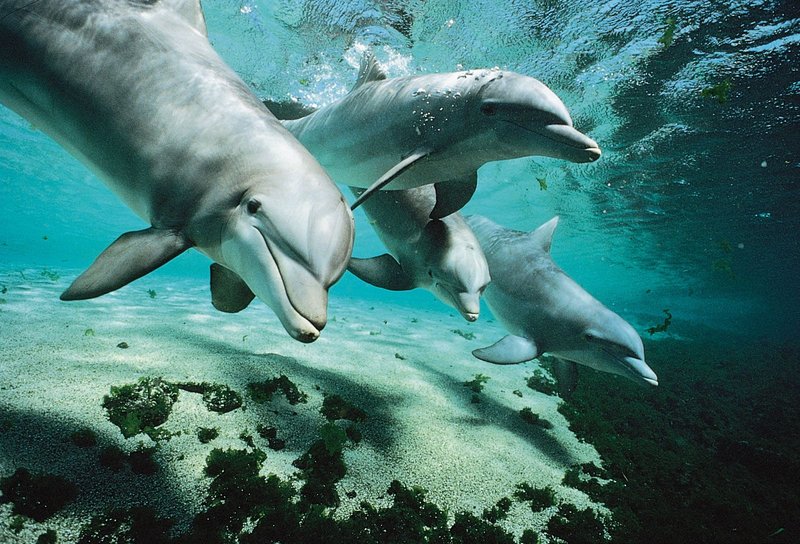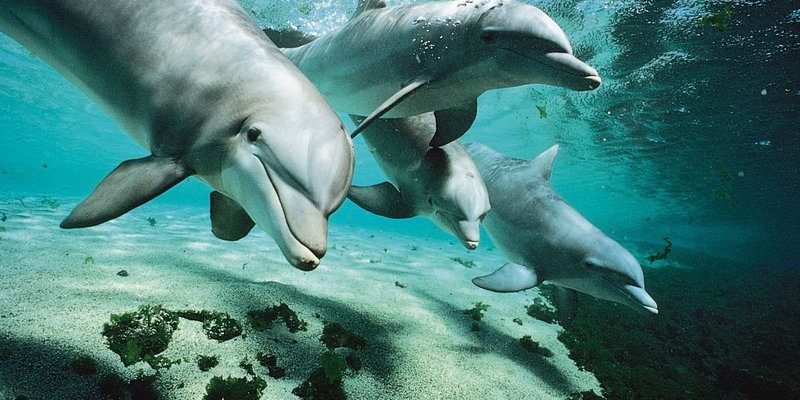
So, where exactly do dolphins call home? From the deep blue seas to shallow coastal waters, and even in some freshwater rivers, dolphins have a knack for fitting into different environments. Let’s dive deeper into the world of dolphins and explore their habitats, how they adapt, and what makes each location special for these amazing marine mammals.
Oceanic Habitats: The Home of Most Dolphins
Most dolphins live in the ocean, which is a fantastic playground filled with diverse ecosystems. The ocean offers everything from deep waters to coastal areas teeming with life. Here, dolphins can find plenty of fish, squid, and even crustaceans to munch on. The open ocean isn’t just about food; it provides dolphins with room to swim, socialize, and play, which are crucial for their well-being.
Typically, you’ll find dolphins in warm, tropical waters, particularly in regions like the Caribbean Sea, the Gulf of Mexico, and parts of the Pacific Ocean. Some species, like the bottlenose dolphin, are incredibly adaptable and can also thrive in cooler waters. They often follow the warm currents that bring food and mates, while some species, like the Orca or killer whale, can even venture into icy polar regions. This adaptability is key to their survival.
In the ocean, dolphins often socialize in groups called pods. Imagine a family reunion where everyone is having fun! Pods can range from just a few dolphins to several dozen, and they communicate using clicks, whistles, and body language. These social structures are essential, as dolphins rely on each other for hunting techniques, protection, and even just for company.
Coastal Areas: Where Dolphins Come to Play
Dolphins are drawn to coastal areas for many reasons. Shallow waters near shorelines burst with life and provide abundant food sources. Here, dolphins can chase schools of fish or interact with their pod members while enjoying the sun’s warmth. Coastal ecosystems, like estuaries and bays, act like nurseries where young dolphins can grow up in a safer environment.
In places like Florida, California, or the Bahamas, you might see dolphins playing in the surf or leaping over waves. This behavior not only makes for a great sight for beachgoers but also helps dolphins communicate with each other. You might be wondering if coastal habitats are putting these dolphins at risk. Unfortunately, they are. Pollution and boat traffic can disrupt their natural behaviors and habitats.
Efforts to protect coastal waters are crucial for dolphin populations. Conservationists work hard to create marine sanctuaries that shield these creatures from threats while allowing them to thrive in their natural habitat. By understanding the connection between dolphins and their coastal environments, we can all play a role in their protection.
Rivers: Surprising Dolphin Dwellers
It might surprise you to know that some dolphins live in rivers, far from the salty ocean! River dolphins, like the Amazon river dolphin (or boto) and the Ganges river dolphin, have adapted to freshwater environments in unique ways. They have a different body structure compared to their oceanic cousins, often being smaller and having less pronounced dorsal fins.
These river dolphins thrive in murky waters where they rely on echolocation to navigate and find food. Imagine using sound to “see” in dark waters! River dolphins often munch on fish, crustaceans, and even small turtles. The rivers they inhabit, like the Amazon and Ganges, are crucial for their survival, but they face numerous threats such as habitat destruction and pollution.
Interestingly, river dolphins often exhibit different behaviors compared to their oceanic relatives. For example, they might be less social and more solitary, spending time alone or in smaller groups. This behavior is an adaptation to their unique environments, where food sources can be more sporadic.
Adaptations: How Dolphins Thrive in Different Environments
Dolphins are incredible animals because they can adapt to various environments, whether it’s the vast ocean or meandering rivers. Here are a few of the ways they do this:
- Physiology: River dolphins have evolved features suited for freshwater living, such as flexible bodies and shorter snouts. Ocean dolphins, on the other hand, have streamlined bodies for efficient swimming in saltwater.
- Behavior: Depending on their habitat, dolphins adjust their social structures. Coastal dolphins often form larger pods, while river dolphins may prefer smaller groups for hunting.
- Communication: Dolphins use different sounds depending on their environment. Those in dense river habitats rely more on clicks to navigate, while ocean dolphins may use a wider range of whistles and social sounds.
These adaptations are vital for their survival. Dolphins are smart; they learn from their surroundings and develop techniques to thrive in their specific habitats.
Threats to Dolphin Habitats
Despite their adaptability, dolphins face numerous threats that jeopardize their habitats. Pollution, habitat destruction, and climate change are just a few challenges. Coastal areas often deal with plastic waste and runoff, which can harm food supplies and even lead to disease.
In rivers, things aren’t much better. Deforestation, dam construction, and industrial waste can severely disrupt river dolphin populations. Without clean waters, their survival is at risk. Additionally, boat traffic can harm their natural behaviors, making it difficult for them to hunt and communicate.
Protecting these habitats is crucial not only for dolphins but also for the health of our planet. Conservation efforts aimed at cleaning up coastal waters and preserving river ecosystems are essential. By raising awareness and participating in local conservation efforts, we can help secure a safer future for dolphins.
Conservation Efforts: Securing Dolphin Habitats
Dolphin conservation is more critical than ever. Several organizations work tirelessly to protect these creatures and their habitats. For example, the Wildlife Conservation Society and Ocean Conservancy focus on research and advocacy to create better policies and protections.
These organizations often engage local communities in conservation efforts. Imagine a coastal town where locals participate in beach clean-ups, monitor dolphin populations, or advocate for sustainable fishing practices—every little effort counts!
Moreover, there are also laws in place to protect dolphins. Many areas have established marine protected areas (MPAs) that restrict harmful activities and provide safe havens for marine life. These protections not only help dolphins but also support healthier ecosystems overall.
Involving communities in conservation brings awareness and education to the forefront. When people understand the importance of dolphins and their habitats, they’re more likely to take action to protect them.
Dolphins are amazing creatures that inhabit a variety of environments, from the vast oceans to winding rivers. Their adaptability allows them to thrive in both salty and freshwater habitats, showcasing their intelligence and resilience. Yet, despite their capable nature, they still face numerous threats that jeopardize their futures.
Understanding where dolphins are found and how they interact with their environments is the first step toward protecting them. By advocating for conservation efforts and supporting organizations working to preserve these habitats, we can help ensure that dolphins continue to leap, splash, and play in our waters for generations to come. So, the next time you think of dolphins, remember—they’re not just ocean dwellers; they’re also river explorers, and every habitat matters!

